The document discusses SQL SELECT statements and iSQL*Plus commands. It describes how to list data from tables, perform calculations on columns, and rename columns with aliases. It also explains how to use iSQL*Plus to write, save, execute SQL statements, and view table structures with the DESCRIBE command.

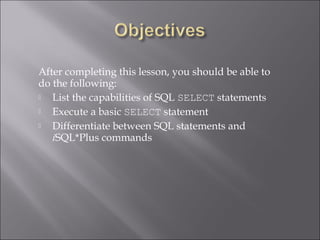

![SELECT
SELECT *|{[DISTINCT] column|expression [alias],...}
*|{[DISTINCT] column|expression [alias],...}
FROM
FROM table;
table;
SELECT identifies what columns
FROM identifies which table](https://image.slidesharecdn.com/les01-130119072717-phpapp01/85/Oracle-Baisc-Tutorial-4-320.jpg)



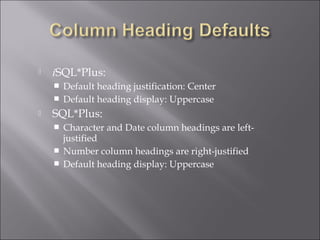



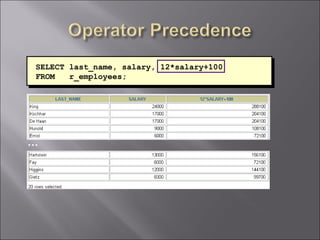



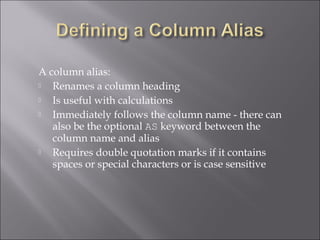





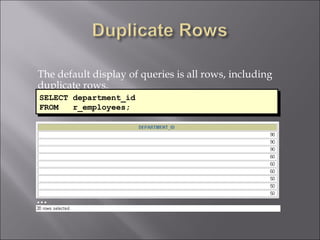
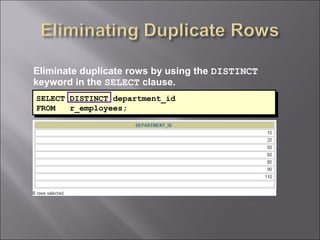





![Use the iSQL*Plus DESCRIBE command to
display
the structure of a table.
DESC[RIBE] tablename
DESC[RIBE] tablename](https://image.slidesharecdn.com/les01-130119072717-phpapp01/85/Oracle-Baisc-Tutorial-29-320.jpg)


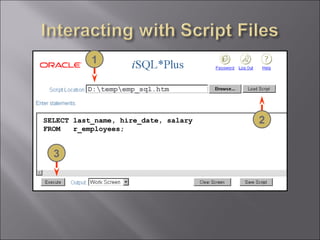

![In this lesson, you should have learned how to:
• Write a SELECT statement that:
– Returns all rows and columns from a table
– Returns specified columns from a table
– Uses column aliases to give descriptive column
headings
• Use the iSQL*Plus environment to write, save, and
execute SQL statements and iSQL*Plus commands.
SELECT
SELECT *|{[DISTINCT] column|expression [alias],...}
*|{[DISTINCT] column|expression [alias],...}
FROM
FROM table;
table;](https://image.slidesharecdn.com/les01-130119072717-phpapp01/85/Oracle-Baisc-Tutorial-34-320.jpg)

